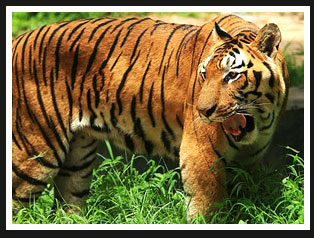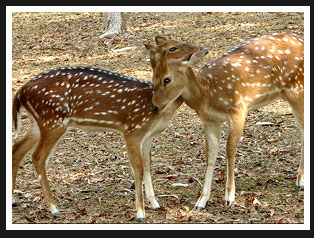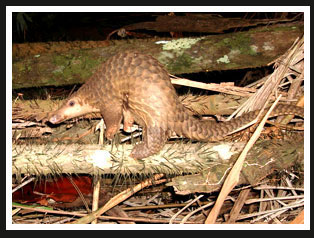Sunderbans National Park
Area: 1,330sq km
Status: World Heritage Site & Biosphere Reserve
Established: 1984
Nearest Airport: Dum Dum Airport (Calcutta) 166km
Nearest Railhead: Canning 105km
Best Time to Visit: November to February
About Sunderbans National Park
Sundarbans National Park, Sunderbans meaning beautiful forest, is one of the largest tiger reserves in India. It is a part of Ganges Delta and is densely covered by mangrove forests. This park is an UNESCO World Heritage Site and is also the largest estuarine forest of mangrove trees in the world. It covers about 2585 km² of land and water bodies extending into the neighboring country, Bangladesh. The core area of Sundarbans was initially established as a tiger reserve in 1973. Later in 1977, it was declared a wildlife sanctuary and in 1984, it was entitled as a national park. This protected area is home to many endangered species like Royal Bengal Tiger and Saltwater Crocodile.
Vegetation of Sundarbans National Park

Tiger, Sunderbans National Park
There are 64 different species of plants found in Sundarbans. Mangrove trees dominate the area of Sundarbans National Park. The flora of Sundarbans has adapted to the estuarine and saline conditions of the area. Dhundal, passur, garjan, sundari and goran are some of the common plants and trees found in Sundarbans. The blossomed flowers of genwa, kankra and khalsi are prominently seen in April and May.
Wildlife in Sunderbans National Park
The dense forests of Sundarbans National Park have become an ideal habitat for Royal Bengal tigers. There are plenty of tigers in the protected regions of the park and have adapted to the different conditions the park has to offer. Chital, Wild Boar, Indian Grey Mongoose, Macaques, Fishing Cats, Leopard Cats, Fox, Jungle Cat, Flying Fox and Pangolin are the other species of wildlife found in Sundarbans.
Avifauna of Sundarbans National Park
Sundarbans National Park is also home to a variety of bird species. Openbill storks, Water Hens, Pariah Kites, Marsh Harriers, Swamp Partridges, Red Junglefowls, Spotted Doves, Jungle Crows, Wood Sandpipers and Green Pigeons are some of the birds that can be seen inside the park.
Aqua Fauna and Reptiles of Sundarbans National Park
Sawfish, Butter Fish, Electric rays, Silver carp, Star Fish, Common Carp, King Crabs, Prawn, Shrimps, Gangetic Dolphins, Common Toads and Tree Frogs are the main aquatic and amphibians found in Sundarbans. This park also has a considerable population of saltwater crocodile, turtles and snakes.
Other Attractions In Sunderbans
The Sajnakhali Sanctuary :Sajnakhali Wildlife Sanctuary is the northern part of Sundarbans and is famous for the different species of bird found in this sanctuary. Water fowl, heron, pelican and many migratory birds are commonly seen inside Sajnakhali wildlife sanctuary.

Spotted Deer, Sunderbans National Park
Netidhopani : The 400-years-old ruins of a temple in Netidhopani have its own legends and are a major tourist attraction.
Bhagabatpur : The largest hatchery of saltwater crocodile lies in Bhagabatpur that has become a major tourist attraction.
Kanak : Kanak is one of the sanctuary beaches for Olive Ridley Turtles in Sunderban.
Haliday Island : Haliday Island is a wildlife sanctuary that is famous for Barking Deer population.
Piyali : Piyali is a called the gateway to Sundarbans and is famous for resident and migratory birds. Piyali Rivers flows through the island.
Kaikhali : Kaikhali is an island on the opposite side of the Sundarbans Tiger Reserve and is a famous tourist hotspot.
Best Time to Visit Sunderbans National Park
The ideal time to visit the Sunderbans national park is during the months of September and May. Winter make the time to see the mighty Royal Bengal Tiger sun-bathing on the river banks.

Pangolin, sunderbans National Park
How to Get there
Air : The nearest airport is Kolkatta, at 112-kms.
Rail : Canning is nearest railhead, at a distance of 48-kms.
Road : Road transportation is available from Kolkatta for Namkhana (105-kms), Sonakhali (100-kms), Raidighi (76-kms), Canning (64-kms), and Najat (92-kms), which are all near the Sunderbans and have access to the riverine waterways leading to it.


